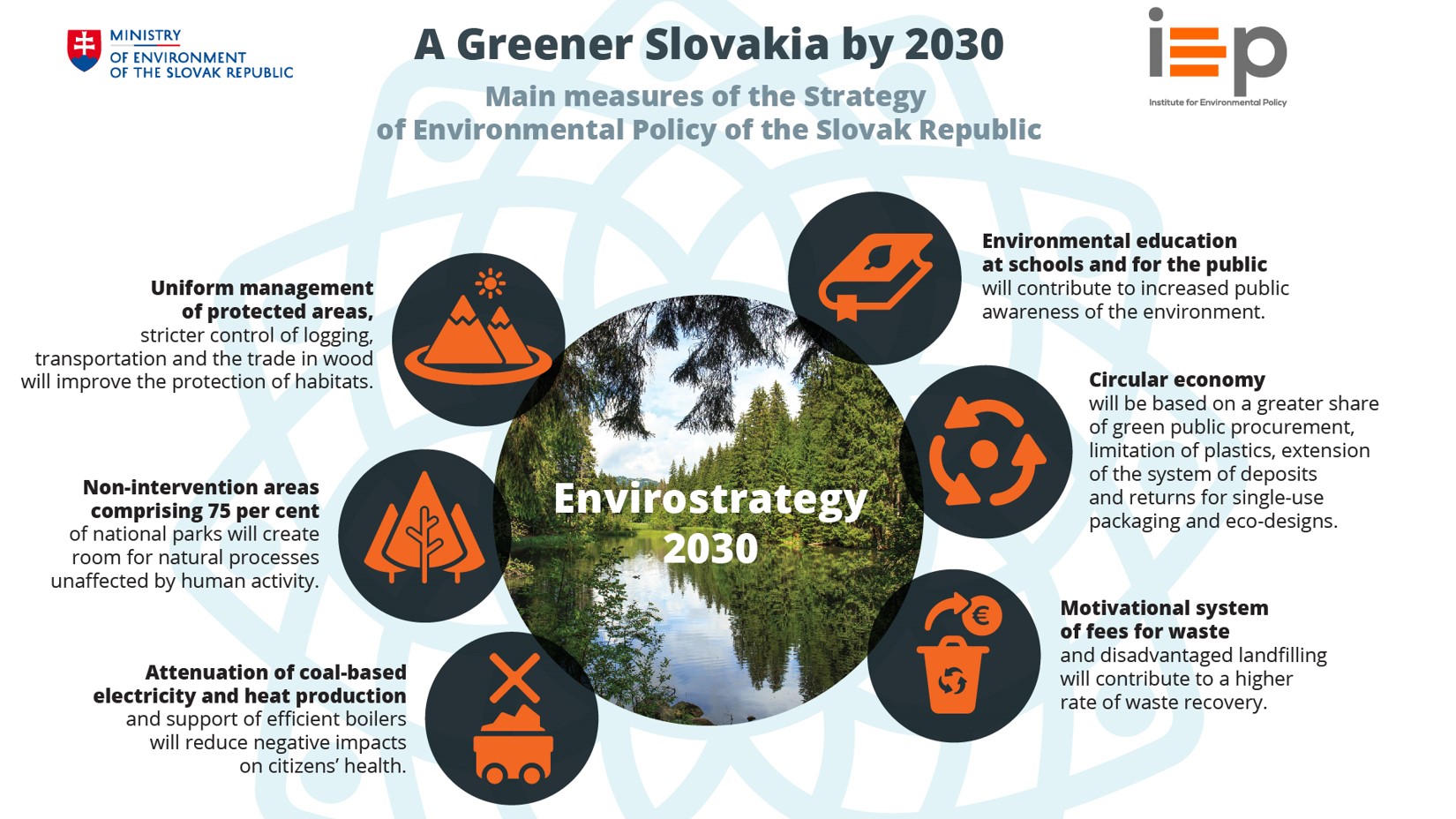Milan Chrenko, Director General of the Directorate for Environmental Policy, EU and International affairs at the Ministry of Environment of the Slovak Republic, gives us his perspective on the relevance of SoE in guiding the Slovak environmental policy, and what he believes the next generation of SoE reports should deliver.
Congratulations! This year, the Slovak SoE report celebrates its 25-year anniversary. In your view, what are the strengths of this report?
A major asset of the Slovak State of Environment report is its continuity. It has been published on a yearly basis since 1994, providing up-to-date facts and figures on the Slovak environment in a comparable and comprehensive way. This sound evidence base enables us to understand the effect of current environmental policies, to adjust these policies and design new ones.
The second strong point is its sound evidence base, ensured primarily thanks to the expertise of the Slovak Environment Agency and the other institutions involved. In addition, an increasing number of stakeholders enrich the SoE reports with their feedbacks. The number of participants in our dedicated SoE stakeholders’ workshops has indeed doubled in recent years, from 50 to around 100. Their feedbacks have helped to improve the communication value and impact of the reports.
Can you highlight a specific case where the SoE reporting process helped to design better policies?
A couple of years ago, we started introducing specific topics in our SoE reports. The first was ‘Global megatrends impacts on the environment’, while, more recently, we explored ‘Health and the environment’ and ‘Circular economy’. When SoE report featuring ‘Global megatrends impacts on the environment’ was published, other ministries were not convinced of the added-value of this new approach. Now, however, they ask us for advice on how to incorporate the impacts of global megatrends in their domains. In this respect, the introduction of specific topic strongly influenced policy-making, by acting as a lever to enrich and facilitate cooperation with other ministries and thus enabling the uptake of environmental concerns in other policy domains.
Looking ahead: what should the SoE report deliver if it is to keep having an impact on environmental policy?
Again, one of the main assets of the Slovak SoE report is its continuous publication since 1994. I strongly believe that future SoE reports should carry on updating assessments and reporting indicators that show the progress made on national and international environmental policies and thus maintain that pace.
Nevertheless, policies and policy objectives change over time and have to respond to emerging issues. SoE reports need to adapt to stay relevant, for example by providing new indicators and assessments on emerging environmental themes. For instance, Slovakia recently launched a new national environmental strategy, ‘Greener Slovakia – the Strategy for the Environmental Policy of the Slovak Republic’. This ‘EnviroStrategy 2030’ runs under the Environment Ministry and focuses on three main areas: protection of water and biodiversity, climate change and air pollution, as well as circular economy. It sets concrete and measurable goals, which should be met by 2030. Against this background, the coming SoE reports will be key instruments in providing the Environment Ministry with the evidence needed to monitor the achievements of the EnviroStrategy 2030.

What processes could further support the uptake of knowledge provided by SoE reports?
In Slovakia, the relationship between science and policy will be strengthened by connecting upcoming SoE reports with the new EnviroStrategy 2030. The next generation of SoE reports should not only be timely, targeted, relevant and provide reliable knowledge with regard to environmental management, but should also reach out to the right stakeholders. Different stakeholders need different kinds of information, and the SoE reports need to address these various information requirements, such as (open) data for experts and the interested public, sound assessments for decision makers, as well as understandable infographics for the general public.
What can countries learn from each other and how can the SOE reporting knowledge exchange best take place in Europe?
While European countries face broadly similar environmental issues, national policies and priorities differ from country to country, as do governance structures. This is why there is a wide array of SoE reports, each tailored to the needs of respective national stakeholders to achieve the overall objective of improving environmental quality. Nevertheless, SoE reporting represents a continuous process of learning by doing, which makes knowledge exchange between experts from different countries so key. The EEA Eionet network [European Environment Information and Observation Network] is an important platform, as it allows us – together - to reflect on the latest insights and data sources, effective indicators, assessment approaches and stakeholder involvement practices. This continuous knowledge exchange helps us to review the way we produce and communicate our Slovak SoE report and to make sure we are in line with international developments. At the same time, we can share our experience and hopefully inspire other countries. Finally, it helps us to make sure that our SoE reports remain a relevant and valuable building block for national policy-making on the environment.

Milan Chrenko’s main fields of expertise include national and international environmental policy, foresight and State of Environment reporting.


Document Actions
Share with others